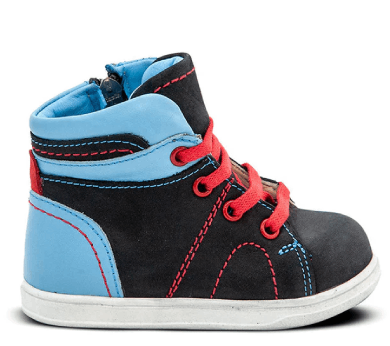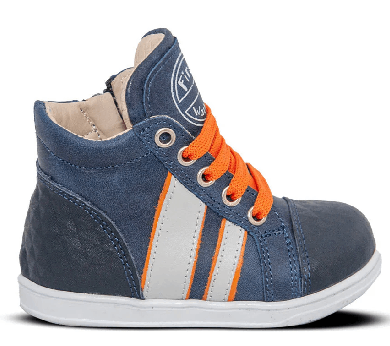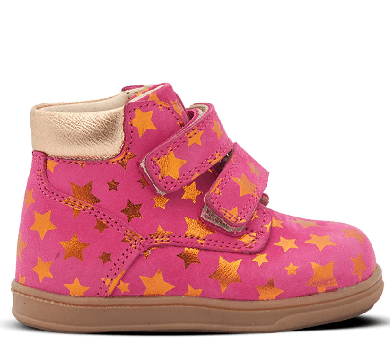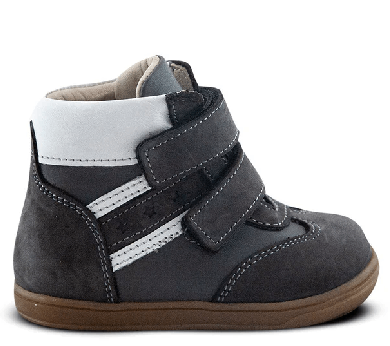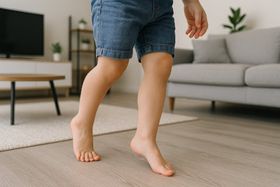Knock Knees and Height: Is There a Connection?
Your toddler’s knees touch, but their ankles don’t. Is it just a phase, or a sign that something’s wrong with their growth?
Updated July 31, 2025
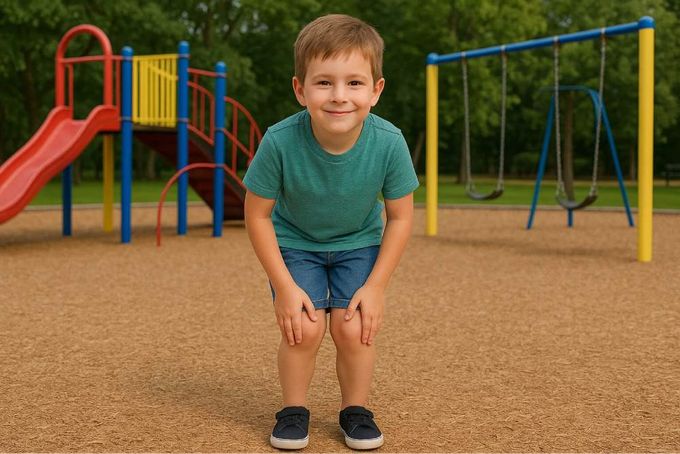
Most parents notice knock knees when their toddler’s knees touch, but their feet stay apart. It can look strange. It can raise questions. And sometimes, it leads to worry: Is this going to affect my child’s growth?
Let’s break this down in plain terms.
» Help your kid's feet develop properly with orthopedic shoes
What Are Knock Knees, and When Are They Normal?
Knock knees, technically called genu valgum, are foot condition where a child’s knees angle inward and touch (or nearly touch) while standing straight. It often shows up after age 2 and peaks around age 3.
This isn’t a defect. It’s part of the body’s natural reshaping as kids grow out of bowlegs, which are common in infancy. By age 7 or 8, most children’s legs straighten on their own. No treatment. No lasting impact.
But there are times when knock knees signal something else.
Here’s what’s not normal:
- The angle is worsening over time, past age 7 or 8
- The knees look uneven (asymmetrical)
- There’s pain or trouble walking
- The child seems shorter than expected for their age
If any of these show up, it’s time to talk to a doctor.
» Find out what a wide gait means for toddlers
Do Knock Knees Affect Height?
No, not by themselves. For most kids, knock knees are just a phase and have no effect on growth.
But when knock knees are caused by something deeper, like a medical issue, they can appear alongside slow growth or short stature. The knees aren’t the cause. They’re a symptom.
Here are the big red flags:
1. Genetic bone disorders
Conditions like skeletal dysplasia, including achondroplasia or multiple epiphyseal dysplasia, affect how bones grow. These disorders interfere with the growth plates, resulting in short height and limb misalignment, like knock knees.
» Learn about spina bifida occulta and its effects on children
2. Vitamin D deficiency
A condition called rickets, common in kids with low vitamin D, softens the bones. This can lead to bowlegs or knock knees and can slow down a child’s height gain. For kids who are malnourished or spend very little time outside, this can be a hidden cause.
So, if your child has knock knees and also seems smaller than peers or is growing slowly, that’s worth checking out.
» Check out the best orthopedist-recommended toddler shoes
Should You Be Worried About Knock-Knees?
Knock knees aren’t a growth problem. But they can point to one.
What matters isn’t the angle of your child’s legs—it’s how they’re growing overall, how they’re moving, and whether they’re in pain.
If the legs are straightening on their own, let them.
If they’re not, and your child is limping, shrinking from activity, or falling behind in growth, it’s worth getting help.
Growth is a system. When something looks off, trust your gut. Ask the questions. And don’t wait too long for answers.
For little ones just learning to walk, look for shoes from brands like First Walkers that are soft, flexible, and designed to support healthy development without getting in the way.
Disclaimer: First Walkers' information is intended for educational and informational purposes related to toddler footwear and feet. We encourage you to consider individual circumstances and consult qualified orthopedists about specific conditions.

